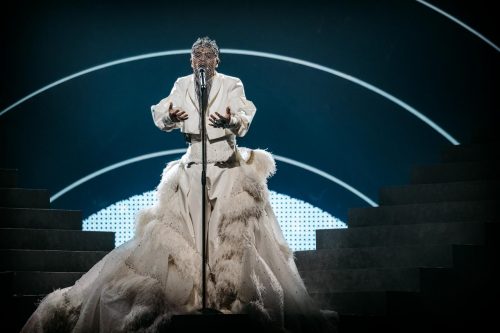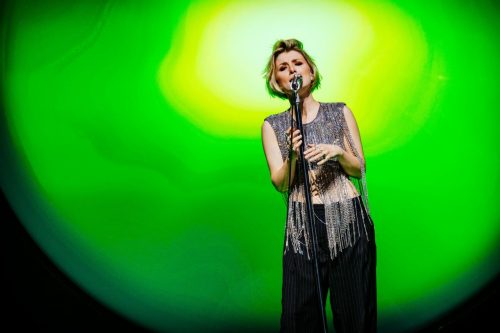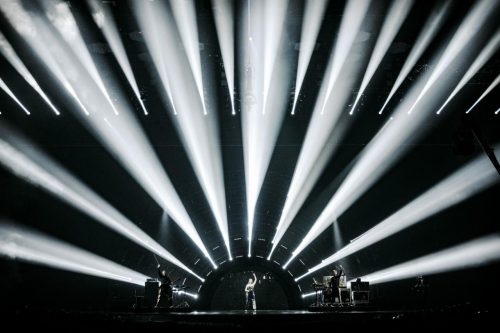The penultimate day of rehearsal: it is becoming increasingly clear what the viewer can expect. Today we saw the last artists of the second semifinal. Let’s take a closer look at the rehearsals:
AUSTRALIA: Whatever you think of Sheldon Riley, he sings like no other. During his emotional ballad he wears the white suit with the enormous drag of feathers. He wears his crystal mask for most of the act, but it goes off. It can’t be difficult for Australia to make it to the final.

CYPRUS: For the first time in years, Cyprus is singing (partially) in Greek again. Andromache and her dancers stand in a kind of shell as they sing the song. We have to admit that we would describe Andromache’s vocals as ‘not bad’. If is that a recommendation….?

IRELAND: Ireland falls into the ‘how nice’ category. Brooke’s vocals are certainly not bad, neither is the act. However, you may wonder if this is the song with which Ireland will finally reach the final again. We cannot rule out the possibility that it will not work.

NORTH MACEDONIA: Perhaps Andrea had hoped for greater success. She was not happy with her first rehearsal. The song comes across as screaming; a hoarseness that suits Kaliopi (2012 and 2016) but not Andrea.

ESTONIA: Unfortunately, Stefan can’t count on the 12 points from Armenia, because the country where his roots lie is performing in the other semifinal. The many movements he makes do have an effect on Stefan’s voice, but somehow it doesn’t seem to matter for the entry. It is a happy song that can easily go through to the final.

ROMANIA: The Romanians made some minor changes to the act, making it even better and slicker. Furthermore, it seemed as if WRS had changed the melody of the chorus a little bit here and there. In any case, a spectacular show is in store for Romania.

POLAND: The ballad of Polen starts very calmly with Ochman alone on stage. Halfway through, when the song becomes a little less quiet, the aforementioned dancers (forest nymphs?) come on stage. We see that a heavy thunderstorm erupts on the stage. Finally a strong contender for Poland agiain.

MONTENEGRO: A ballad in which not much happens in 3 minutes. The advantage is that not much can go wrong. We had already mentioned the blue dress that Vladana is wearing. Behind her a circle that most resembles the fluff ball of a dandelion. It is not sure whether it stands out enough to go to the final.

BELGIUM: The Belgians have a strong singer with a gospel-like power ballad in Jérémie Makiese. He will definitely get points for that. Fortunately, because the act he shows looks a bit stiff and doesn’t really do justice to the song and singer.

SWEDEN: Murphy’s Law strikes. If one thing goes wrong, everything immediately goes wrong. Problems with the sound, problems with the technique and a falling cameraman meant that she was only able to do one whole runthrough. Cornelia did manage to show how professional she is, by showing a good rehearsal even with all that trouble.

CZECH REPUBLIC: The act with lots of light and nice graphics fits very well with the Czech entry. In that respect it is a unity. The vocals, however, leave a lot to be desired. That could cost them their heads if it has to be clear who will go to the final.



